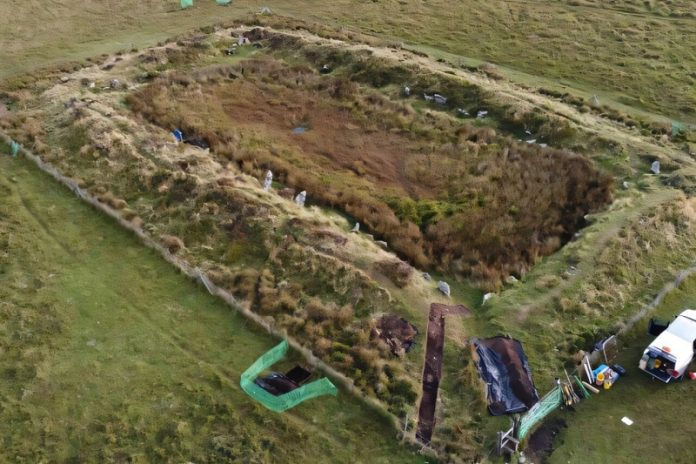
A site in Cornwall known as “King Arthur’s Hall” has just been revealed to be much older than previously believed—dating back a remarkable 5,500 years to the Neolithic period!
This discovery was made by a team of researchers from the University of St Andrews, the University of Reading, and Newcastle University.
Previously, King Arthur’s Hall, located on Bodmin Moor, was thought to date back to the medieval period, around 1000 AD, and was even believed to be an animal pen.
But recent findings show it may have been built during prehistoric times, offering a fascinating glimpse into ancient history.
The structure itself is made up of a rectangular bank of earth and stones, with 56 standing stones surrounding it.
Some of these stones are up to 1.8 meters tall, but many are leaning, partially buried, or lying flat.
Historic England had listed it as a medieval monument, but questions had persisted due to the unusual presence of standing stones, which often signal older sites.
The breakthrough came from a technique called optically stimulated luminescence (OSL). This method can date when certain sediments were last exposed to light.
Dr. Tim Kinnaird and his team used OSL on the mound’s soil, revealing that it was built around 5,500 years ago, during the Neolithic era.
This makes it roughly 4,000 years older than initially thought, placing it alongside other ancient landmarks from the Neolithic period.
“This is an incredible discovery!” said Dr. Kinnaird, who led the project. He noted that uncovering the true age of King Arthur’s Hall allows archaeologists to understand more about Bodmin Moor’s prehistoric landscape and how people might have lived, worked, and gathered there thousands of years ago.
The project is part of “A Monumental Improvement,” commissioned by Cornwall National Landscape. This project, in collaboration with the Cornwall Archaeological Unit (CAU), aims to better understand and protect historical sites on the moor.
Dr. Kinnaird and his colleague Professor Sam Turner from Newcastle University visited the excavation site, where they observed signs of soil disturbance dating back to the Neolithic, which confirmed the monument’s age.
Dr. Kinnaird believes this discovery hints at a vibrant, active community on Bodmin Moor thousands of years ago. The team now plans to explore the area further to uncover how this monument may have fit into a larger prehistoric landscape, rich with other ancient structures.
The discovery opens up exciting questions about the history of Bodmin Moor and the people who built and used these sites long before King Arthur’s legendary time.



